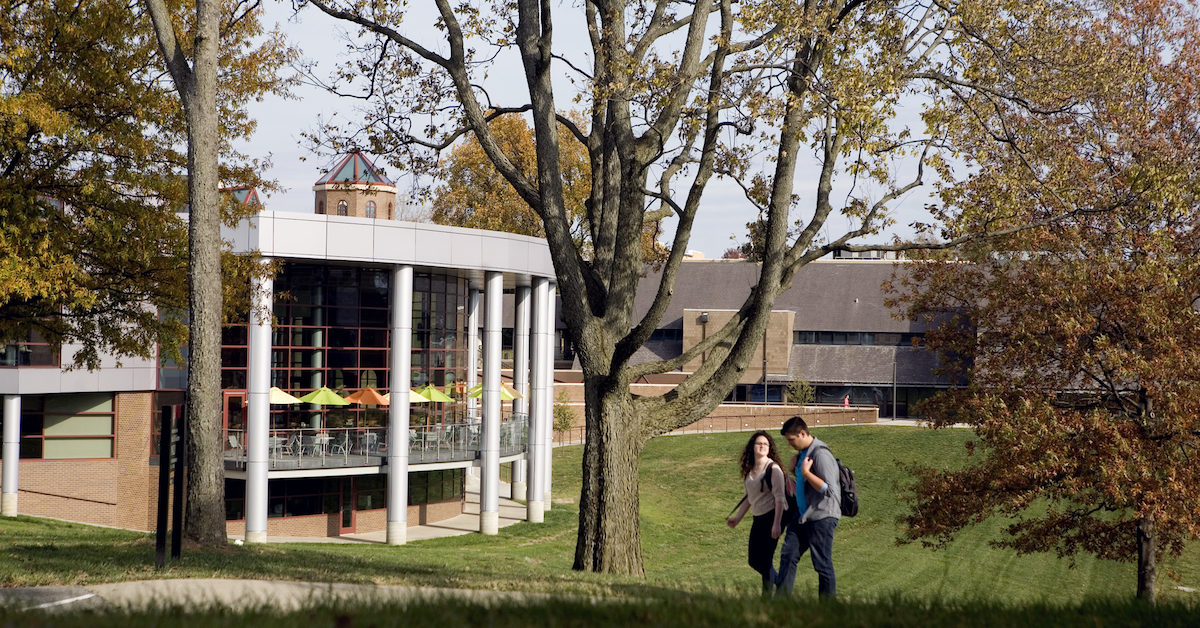
A campus-wide initiative to help undergraduate students stay enrolled and complete their degrees earned Bellarmine University a national award for its innovative use of technology in college learning.
Bellarmine's "first year predictive model" uses dozens of variables to predict when a new college student might be at risk of failing or withdrawing, based on student outcome data from previous years. The model can generate automatic alerts based on those variables, allowing faculty and staff to respond quickly to individual student needs.
The
National College Learning Center Association will present their 2018 Innovative Use of Technology Award to Bellarmine at the organization's annual conference this fall. This is the project's second major recognition, after receiving the
American College Personnel Association's 2018 Innovative Academic Support Initiative Award in February.
In its first year, the model helped drive a record 75 percent of Bellarmine's freshmen to the university's academic advising center, which helps students select or change a major, then plan a path to graduate in four years. Additionally, the university's increased understanding of various risk factors is being used to plan new retention and support initiatives.
"This innovative use of technology and precise focus on student success has better positioned our university for the future," said Dr. Susan M. Donovan, Bellarmine's president. "By letting the data tell the story, we're able to support students with the programs and services they actually need, rather than what we think they might need. As a result, we're seeing more student engagement with our
Student Success Center, and those engagements have become more meaningful."
The project began as an effort to better understand what factors put students at greater risk of leaving college. Using three years of Bellarmine data, the team reviewed dozens of variables to learn how a student's continued enrollment is affected by their background before arriving on campus as well as by their use of different university resources during their first year. Those dozens of variables include their high school curriculum and GPA, their distance from home, their type of high school, their participation in a Bellarmine learning community or intercollegiate sport, and how frequently they access their course websites.
Using that data, the team sought to develop a model that helps determine when and how connecting students to various resources impacts their success and continued enrollment. Their goal is to drive students to the right resources at critical times. They also use what they learned to enhance existing
Student Success Center programs and services, in order to become more flexible in meeting student needs -- which can evolve quickly from year to year.
Dr. James Breslin, dean of student success at Bellarmine, oversees academic advising and support services -- including tutoring, writing and testing assistance -- along with the Pioneer Scholars, a program to mentor students who are striving to become the first in their families to complete a college degree.
"This process has helped us initiate discussions regarding how the university can become more student-ready, as opposed to expecting students to figure out how to become college-ready," said Breslin. "Now, our faculty and staff are engaging students more frequently and with more direction, rather than just 'checking in' to see how a student is doing. The first year predictive model has allowed our learning center resources to become more nimble in responding to evolving student needs."
The project team consisted of Dr. Kristen Wallitsch, associate dean of student success for academic support; Drew Thiemann, director of institutional research and effectiveness; Elizabeth Cassady, assistant dean and senior director of academic services; and Breslin, with support from the university's Information Technology office. They worked for two years to plan and develop their model.
"The intentionality around including multiple Bellarmine offices is the real core of this project, and is what makes this model truly unique," said Thiemann.
The team will present their work at the National College Learning Center Association's annual conference in October. They plan to continue working to refine their model as they encounter new variables and as student needs evolve.